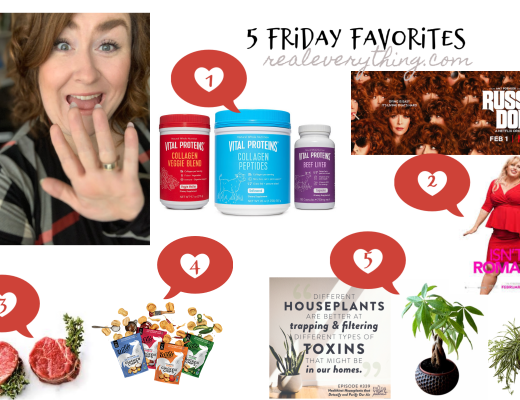Why Nontoxic Nonstick Cookware? If you put thought into your ingredients, consider carefully the materials that compose your cookware. Is your cookware truly non-toxic? Unfortunately most brands claiming to be PFAS-free still contain potentially harmful chemicals. Learn more about why and how that is as well as chemical-free pot and pan options.
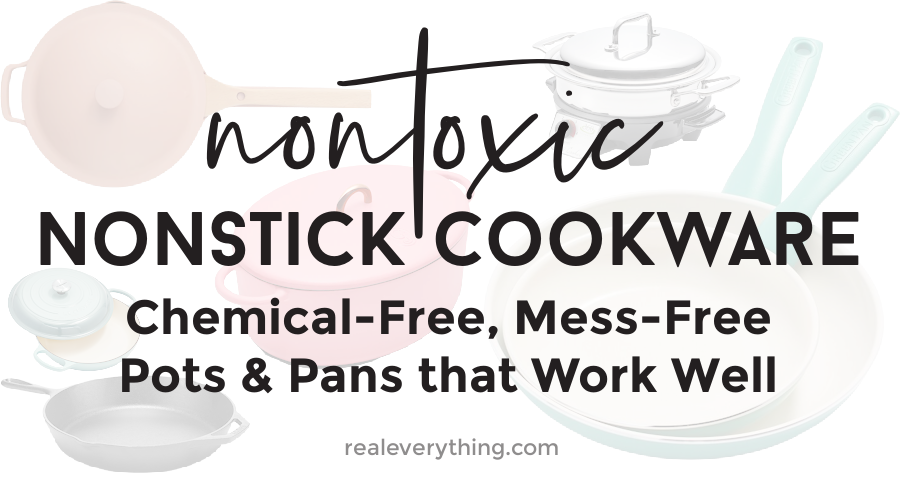
History of PFAS and PFOA in Food
Since 2020 (in large part due to Mark Ruffalo’s performance in Dark Waters) consumers have become more aware of the dangers of PFAS and PFOA. And while the FDA’s website says that it “reviews new scientific information on the authorized uses of food contact substances to ensure that these uses continue to be safe”, it seems in contradiction to their published studies showing the toxic affects. For example, after two published articles (1, 2) showed negative health effects. And, the FDA announced a voluntary phase-out of certain PFAS (related to food).
While the FDA gave the industry until summer 2025 remove it from products, companies still sell to unknowing consumers. Yet, most food packaging and cookware – not to mention most public water sources – still contain this potentially harmful “forever chemical”.
For decades, the FDA knew toxic ‘forever chemicals’ were dangerous but continued to allow their use. As far back as the 1960s, animal studies showed the chemicals caused harm even months after exposure ended and industry studies showed they could migrate from paper and paperboard food packaging into food.
By the 1980s, studies showed PFAS chemicals could pose health risks under a range of circumstances, but the agency continued to approve expanded uses of the chemicals, in addition to new types of PFAS. [read full timeline here]
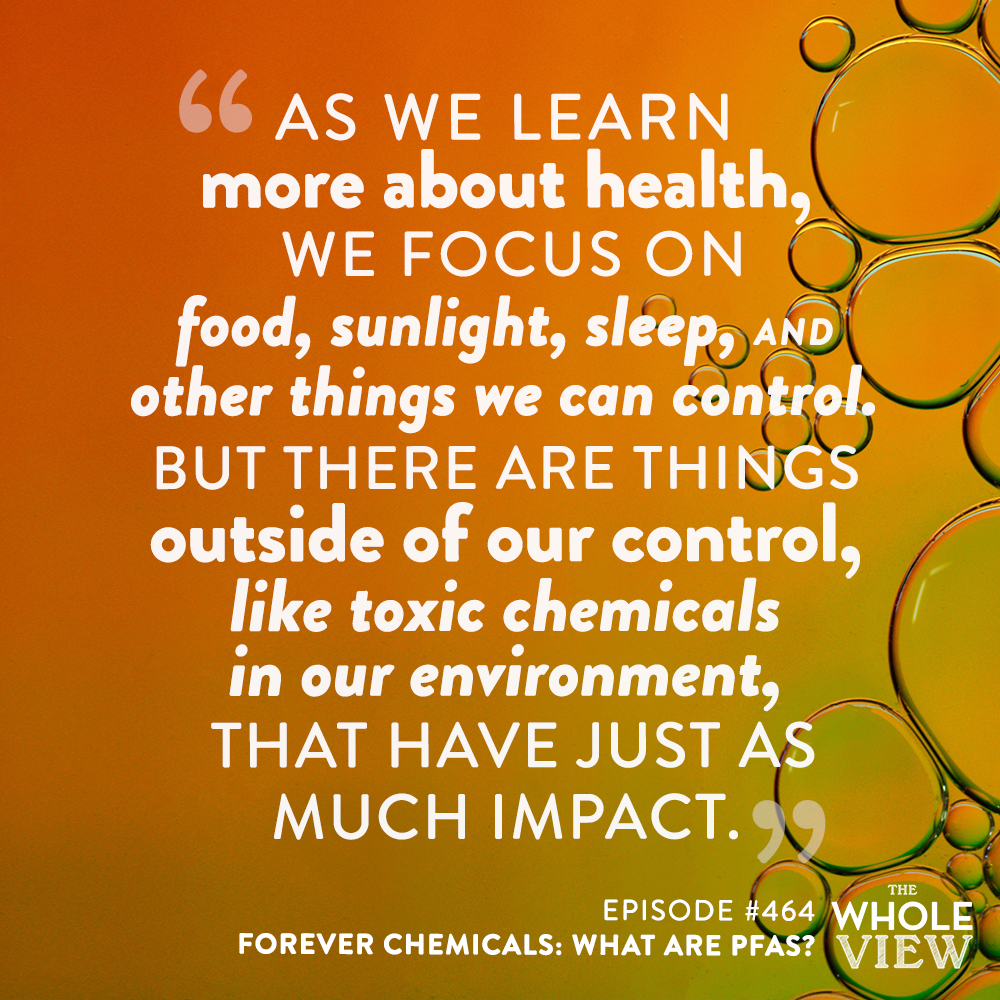 learn more from Ep 464 of Season 3 of The Whole View, show notes here
learn more from Ep 464 of Season 3 of The Whole View, show notes here
FDA Confirms Toxic Nonstick Cookware Chemicals Are Contaminating Our Food and Water Supply
The agency conducts studies on the prevalence of PFAS—a common chemical ingredient in nonstick pans—in various food and water sources.
The FDA presented its findings from three studies on the prevalence of PFAS at the Society of Environmental Toxicology and Chemistry’s annual European meeting in Helsinki earlier this week. The agency explained that these chemicals that have been widely used in nonstick cookware, contact paper, food packaging, cleaning products, and other industrial products have leached into our food and water supply, as well as contaminated our livestock and the sewage sludge used for fertilization. [source]
Exposure to PFAS chemicals correlates with serious health risks. These include cancer, reproductive harm, developmental harm, high cholesterol, damage to the immune system, hormone disruption, and liver and kidney damage [source] as well as thyroid disease, infertility, obesity and several other health conditions. [source]
In fact, in June 2022 the EPA released four drinking water health advisories for PFAS. Here is an NGO then petitioned the FDA to ban the use of PFAS in food in 2021.
There are over 12,000 types of PFAS
PFAS stands for a family of chemicals called per- and poly-fluoroalkyl substances that were originally associated with Teflon’s nonstick cookware. Perfluorooctanoic acid (PFOA) and perfluorooctane sulfonate (PFOS) are two of the most known PFAS chemicals.
Manufacturing in particular has been hard on our environment, and thus all of us – it’s even found in our rainwater now. “Thousands of chemical-related manufacturing sites across the US should be presumed to have “forever chemical” pollution” (2022 study).
Due to concerns about their persistence in the environment and potential for toxicity, DuPont, 3M, and other manufacturers reached an agreement with the EPA in 2006 to phase out PFOA and PFOS in the U.S.
This stuff is toxic at incredibly low levels and it’s persistent — it stays there for hundreds of years in the groundwater, thousands of years. And that means the next generations will be drinking it, and that’s not the kind of legacy we want to leave our kids.” Graham Peaslee, a Notre Dame professor and researcher [source]
Unfortunately, regulation hasn’t kept up with innovation and science.
There is now new generation of PFAS, still used today in many common products. As of February 2022, the U.S. Environmental Protection Agency counted about 12,000 different kinds of PFAS. [source]
All PFAS include a carbon-fluorine molecule bond, which other molecules cannot break between the carbon-fluorine bond. The result is that other chemicals slide off of surfaces treated with PFAS, thus making them non-stick and stain-resistant. That same characteristic can also make PFAS harmful. The chemicals are virtually indestructible and do not fully degrade in the environment or within living tissue. For that reason, they’re often referred to as “forever chemicals.” [source]
Nontoxic Nonstick Cookware: Chemical-Free, Mess-Free Pots and Pans
What works and doesn’t work? Are they actually as safe and environmentally-friendly as they claim? Let’s take a look at what I recommend and not…
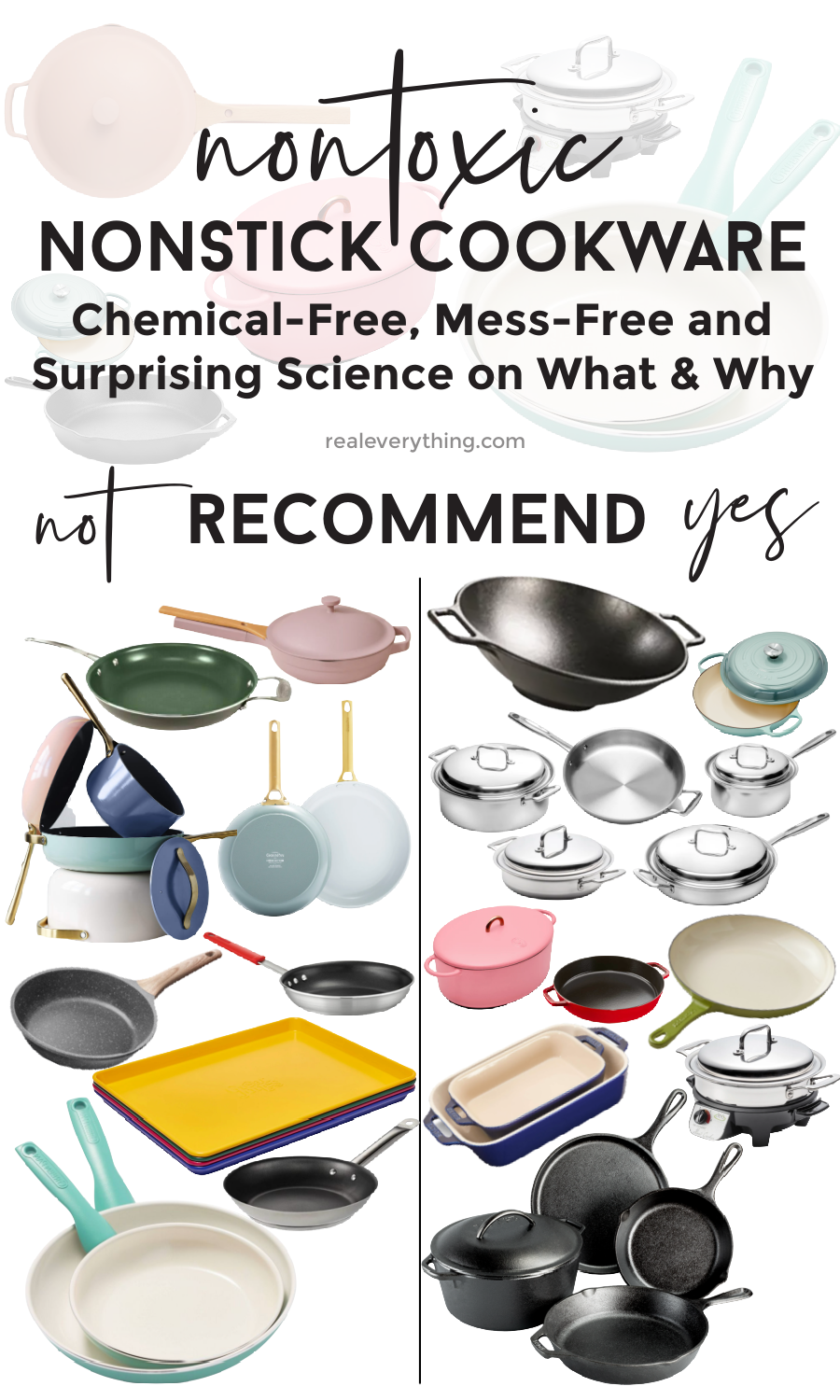
Would NOT Recommend: Traditional Nonstick
These are my personal thoughts and opinions. Before non-stick cookware is authorized for market, the FDA conducts a rigorous scientific review.
Not only do traditional nonstick cookware have PFAS – after-all Teflon was one of the originators in using it – but, their manufacturing process has a high output of environmental toxins. That’s what the movie Dark Waters was all about!
Also, from a functionality perspective, they’re less durable than stainless steel, and the coating can scratch or chip. You cannot use sharp or metal utensils (silicone utensils are best for nonstick pots and pans) and they require careful storage, use, and cleaning to protect the nonstick coating. Furthermore, you cannot cook on high heat because it will damage the nonstick coating and increase chemical leaching into food.
So, not only can they release potentially toxic chemicals into your food when heated, they can be be toxic to our environment from manufacturing and won’t last long regardless.
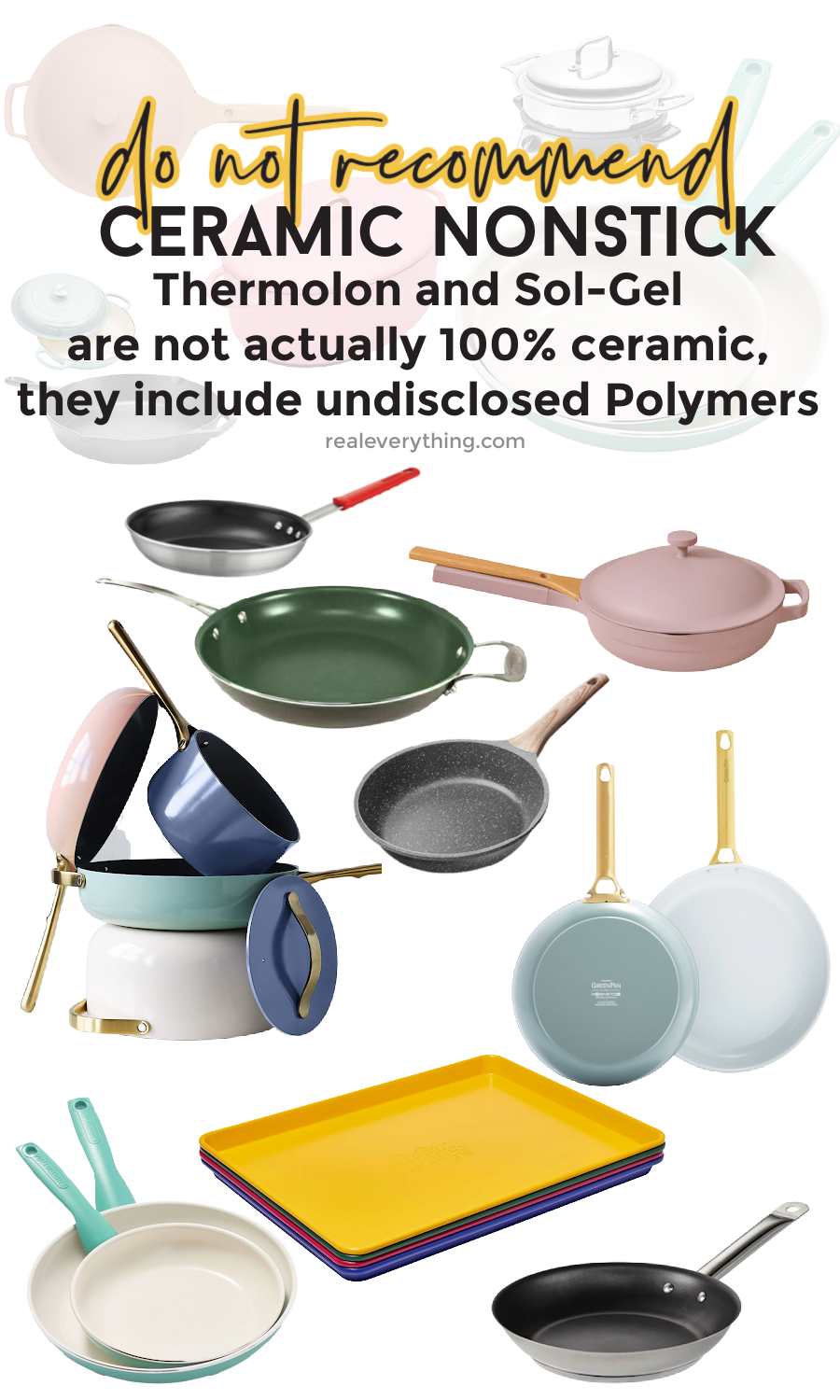
Would NOT Recommend: “Ceramic Nonstick” aka Thermolon and Sol-Gel
Made with “ceramic nonstick coatings” – no, they aren’t actually. Proprietary Thermolon (Green Pan) and sol-gel (Always, Caraway and others) are actually made of mostly sand ceramic but have the additions of organic and inorganic undisclosed polymers, so we don’t know what it’s made of. According to the manufacturer, “Sol-gel is not a ceramic. The associated technology is a mix of totally different chemistry types, namely organic and inorganic. Although sol-gel coatings carry many of the same characteristics as ceramics, they do so to a lesser degree.”
While these ceramic nonstick coatings are free of fluoropolymers, it’s not clear what they are made of and what that risk is. The fact that the hyperlink on their page to the materials goes to one where Teflon has rebranded doesn’t given me confidence, especially since we see in 3rd party testing that other potentially hazardous (undisclosed) chemicals are found, like BPA.
This is especially concerning when the Wirecutter review in the NYT noted the coating chipped after only a few months of use and that the slippery, nonstick coating wore off after about a year of use. Thus, we can imagine it’s going into our food (and bodies). And, if the pan wears out, even if the coating is safe, it’s not environmentally-friendly to replace annually.
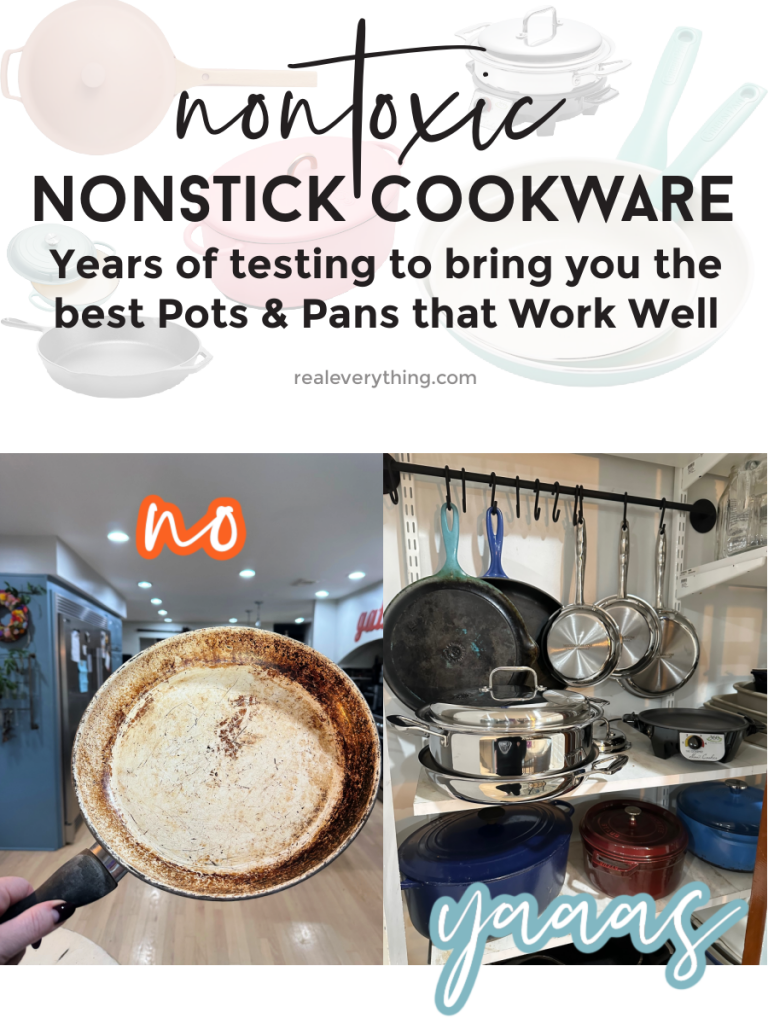
Green Pan, made with Thermolon
I love that our family’s original non-stick alternative, GreenPan, “created the first, and best, alternative in 2007 with our healthy ceramic nonstick. It starts with nature—the raw material for our coating is sand. Unlike traditional nonstick coatings, Thermolon™ is manufactured without PFAS, PFOA, lead, or cadmium.” But what binds the sand to the pan?
Now that I know more about what else is in the coating, it’s not something I will choose to purchase again. Since after a couple of years we mangled the coating, I imagine it’s a proprietary version of Sol-Gel. It was impossible to get clean and tons of chipping and scratching.
Always Pan by Our Place, made with Sol-Gel
I love that Our Place published the testing reports. I don’t love that they won’t disclose the full ingredients of what the Sol-gel is made of. According to the Wirecutter review in the NYT, the Always Pan is difficult to clean (more than stainless steel). Even hand-washing after each use led to spotted staining within a few months. The article also showed that feedback is consistent about chipping and that the slippery, nonstick coating wore off after only a few months.
Caraway, made with Sol-Gel
According to the Wirecutter review in the NYT, the testers stopped using the pans when they were no longer reliably nonstick anymore. “It’s tricky to cook eggs or other delicate items on it and even then I still feel like I should baby it a little, to prevent further wear.”
What We Use and Recommend
I am so excited to share about a new-to-me brand we are loving and a couple tried and true favorites that have been in our kitchen for decades.
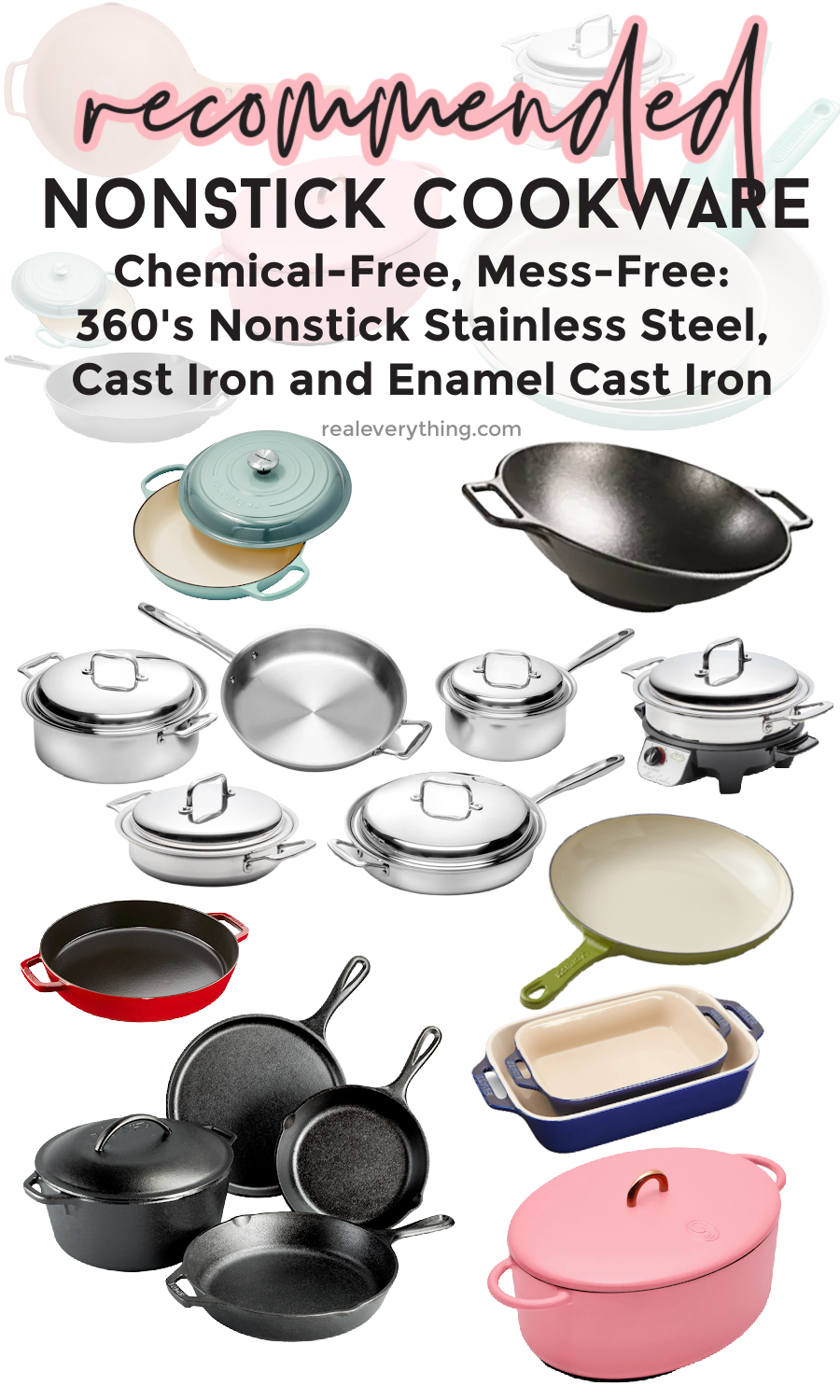
Stainless Steel, 360 Cookware
I didn’t think stainless steel could be non-stick without a coating, but the dream is alive, my friends! Stainless steel is one of a chef’s go-to cookware items for a reason. And now, because of 360’s innovative sanding process to finish the construction, it is also non-stick and has a built-in proprietary Vapor Cooking Method. If you choose to use a lid with this method, it allows you to cook waterless – retaining more vitamins and nutrients in vegetables.
Their stainless steel cookware pans use a dry sanding process which gives it a non-porous surface. That’s why and how non-stick prevents sticking – by removing pores on the surface where food “sticks”. With their innovative technique, no more chemical coatings are needed! This also allows for easy clean up – the kids put it in the dishwasher, and it was magic. It cleaned and cooked more evenly without sticking better than our GreenPan, which does have a chemical coating!
360 Cookware is made of three primary metals: 1) The inside layer (cooking surface) is Surgical Grade Stainless Steel. 2) The outside layer (sits on the burner) is T-400 series stainless steel which has a lower nickel content and high carbon steel content to interact on induction cook tops. 3) These two layers of stainless steel surround a layer of aluminum, which ensures superior heat conduction and even heating. The layers are bonded to ensure your food never comes into contact with anything potentially hazardous, such as aluminum.
Our family went nuts once we discovered this cookware! I replaced all of our sauté pans and got the large pot, which works with their griddle to act as a safer slow cooker, too!
SHOP HERE, get 25% off everything with code WHOLEVIEW (we have the 3-Piece Fry Pan Set and 6-Piece Cookware set, as well as the Slow Cooker)
Cast Iron
Cast iron is our tried and true go-to since my grandmother started cooking. Why?
- Cast iron cookware can be used on any surface – stovetop, oven, grill, campfire (just not microwave)
- Cast iron can make almost anything! It can sear meat, grill, saute, fry, and even bake. I suggest a skillet cookie and cornbread.
- It’s tough and made to last a lifetime
- When properly seasoned and cleaned, it has a naturally nonstick finish*
- Cast iron has incredible heat retention, allowing foods to reach optimal texture and taste better (mmmm…crispy fried chicken)
I love Lodge, which is very affordable. They use a 100% natural oil to pre-season the pan and leaves a lovely black patina from carbon. We love our Wok and Fry Pan. They have a great FAQ about use here.
*A really well seasoned surface prevents foods, like eggs, from sticking to the surface.
SHOP HERE: Lodge Wok, our favorite 12″ Skillet Lodge Pan, see all Lodge here
(True) Enamel Cast Iron like Le Creuset or Staub
Enameled cast iron is cast iron with an incredibly durable coating that uses enamel, a powdered glass that’s melted to the cast iron at high temperatures. The glass bonds with the metal creating a durable, non-reactive, coating that’s safe to cook with (and not inexpensive). We covet our cast iron pieces in the kitchen. They have held up for decades, passed down through generations.
Whether you choose to stir-fry, slow-cook a casserole, sear a steak or bake a cake, there is a shape that is suitable. Due to the cast iron, it performs well for either slow cooking or high-temperature searing. Reliably use enameled cast iron on any heat source, including induction, and with any oven or grill. It has the ability to retain heat and cold efficiently.
SHOP HERE: Le Creuset (our favorites are Dutch Oven, Skillet, and Braiser) and Staub (our favorite is baking dishes, casserole dish, and cocotte round)
Be Careful With…
A few complications come up when brands mix and match what they manufacture.
For example, Great Jones makes products that are stainless steel (good, but not non-stick), are cast-iron enamel (great, like their colorful cute dutch ovens), and have “custom nonstick ceramic coating” (not great, unfortunately). I wanted to discover their Holy Sheets were safe but not all ingredients are disclosed.
All-Clad makes excellent stainless steel (again, not non-stick) but they also make items with traditional nonstick coating.
I also found “marble” non-stick as the new alternative. Arriving in the states in 2019, Caannasweis appears to be the originator, but I could not find a website for the company. The best I could find is the Amazon page which lists the marble as a “coating” with no further information on what else it might be made of. They state the pans have certifications and are PFOA-free, but that means there could be other PFAS. Without knowing what else is in the marble coating it’s impossible to know.
For me, I look for “cast iron enamel” and ensure that the “coating” is 100% sand/glass. The specific brands I recommended do not have chemical coating and therefore have reduced risks of those with undisclosed ingredients in their coatings. But remember just because something says “healthy” doesn’t mean it’s been tested for safety.
I LOVED researching this for you, and myself.
I had no idea what makes up Enamel Cast Iron! Thankfully, I found that the process is as non-toxic as I hoped. If you want to read more about my discoveries of non-toxic living, inside and out, you can keep up each week on Instagram and our newsletters:
- Want more info on our Real Life? Healthy recipes, parenting tips, and general lifestyle stuff goes out in our Real Everything newsletter, join here.
- Never want to miss a post, sale, or deal? Join my Healthy Inside & Out e-mail list for more info on non-toxic living and safer skincare!
References:
- EWG, FDA Tests Confirm Suspicions about PFAS
- Science Direct, Characterizing biopersistence potential of the metabolite 5:3 fluorotelomer carboxylic acid after repeated oral exposure to the 6:2 fluorotelomer alcohol
- Science Direct, Comparative analysis of the toxicological databases for 6:2 fluorotelomer alcohol (6:2 FTOH) and perfluorohexanoic acid (PFHxA)
- NGO, Citizens petition requesting that the agency take more aggressive action to protect consumers from per- and poly-fluoroalkyl substances (PFAS) by banning all forms that biopersist in the human body
- PBS, Why Getting PFAS Out of Our Products is So Hard and Why It Matters
- Chemical & Engineering News, PFAS Pollution Likely at thousands of US manufacturing sites
- USA Today, What are PFAS? A guide to understanding chemicals behind nonstick pans, cancer fears
- Cooking Light, FDA Confirms Toxic Nonstick Cookware Chemicals Are Contaminating Our Food and Water Supply
- Food Network, The Best Non-Toxic Cookware, Tested by Food Network Kitchen
- EPA, Drinking Water Health Advisories
- Orion, Sol-gel Nonstick Coating
- Lead Safe Mama, Which pots & pans are the safest for cooking? Which pots & pans are the least toxic?
- Lodge, Benefits of Cast Iron

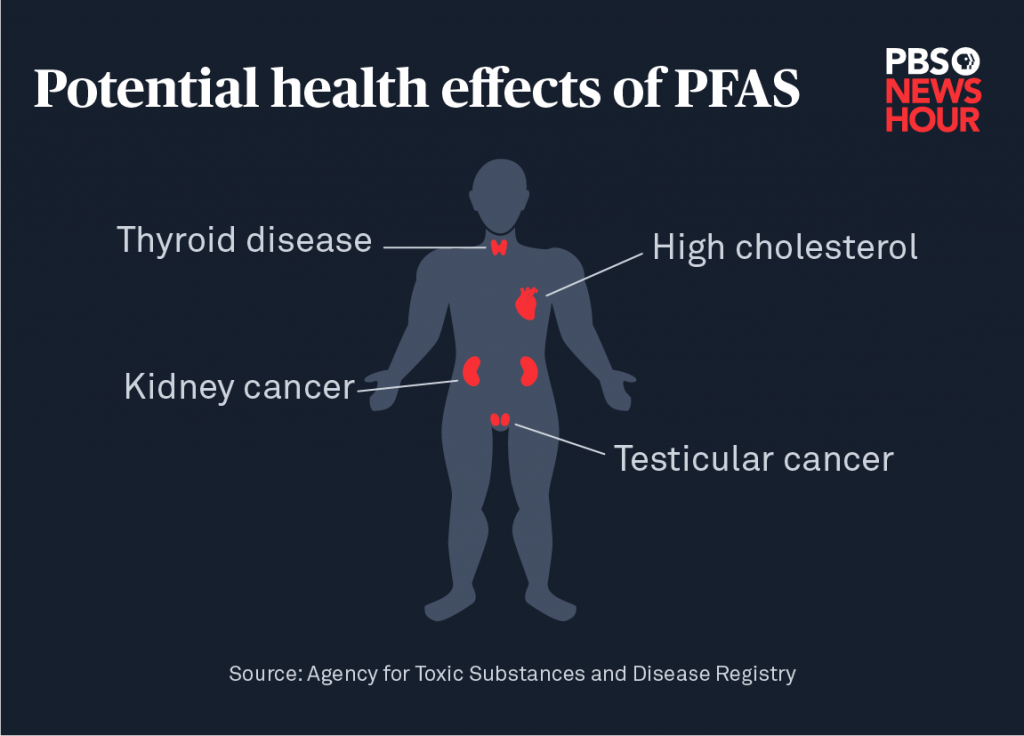 read more info here
read more info here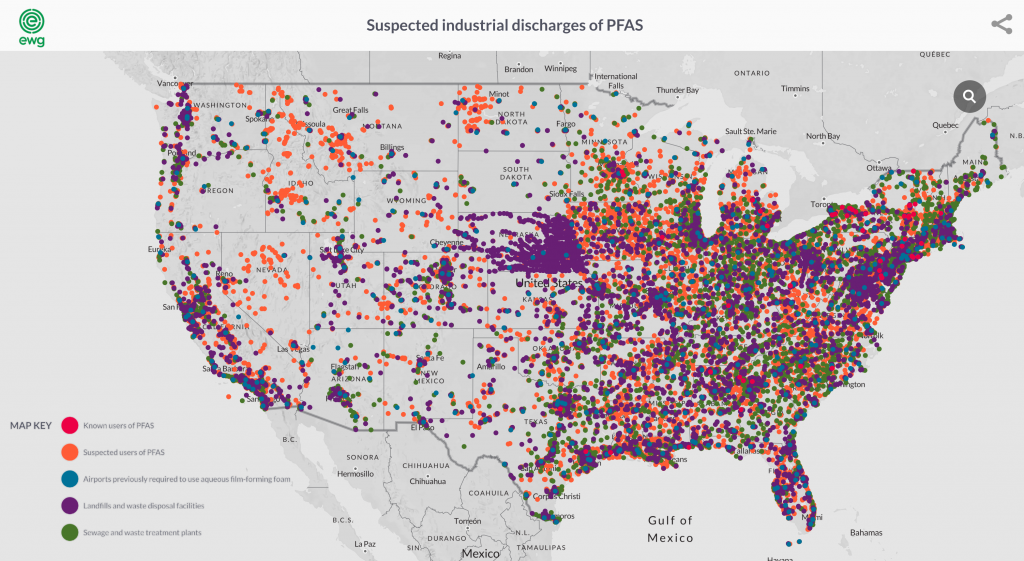
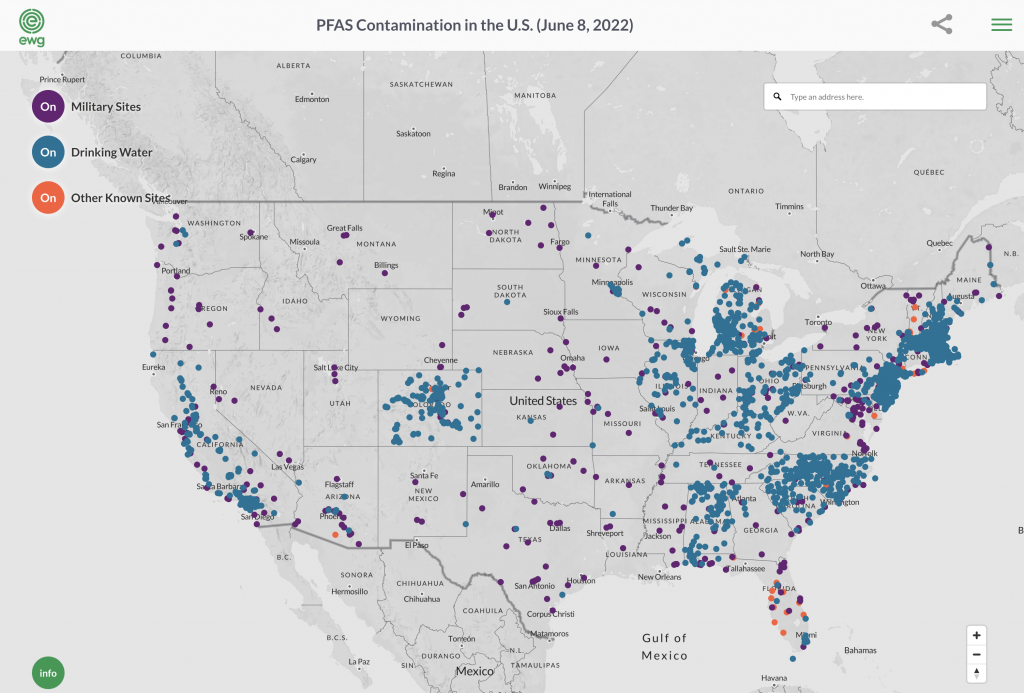 click for interactive maps
click for interactive maps